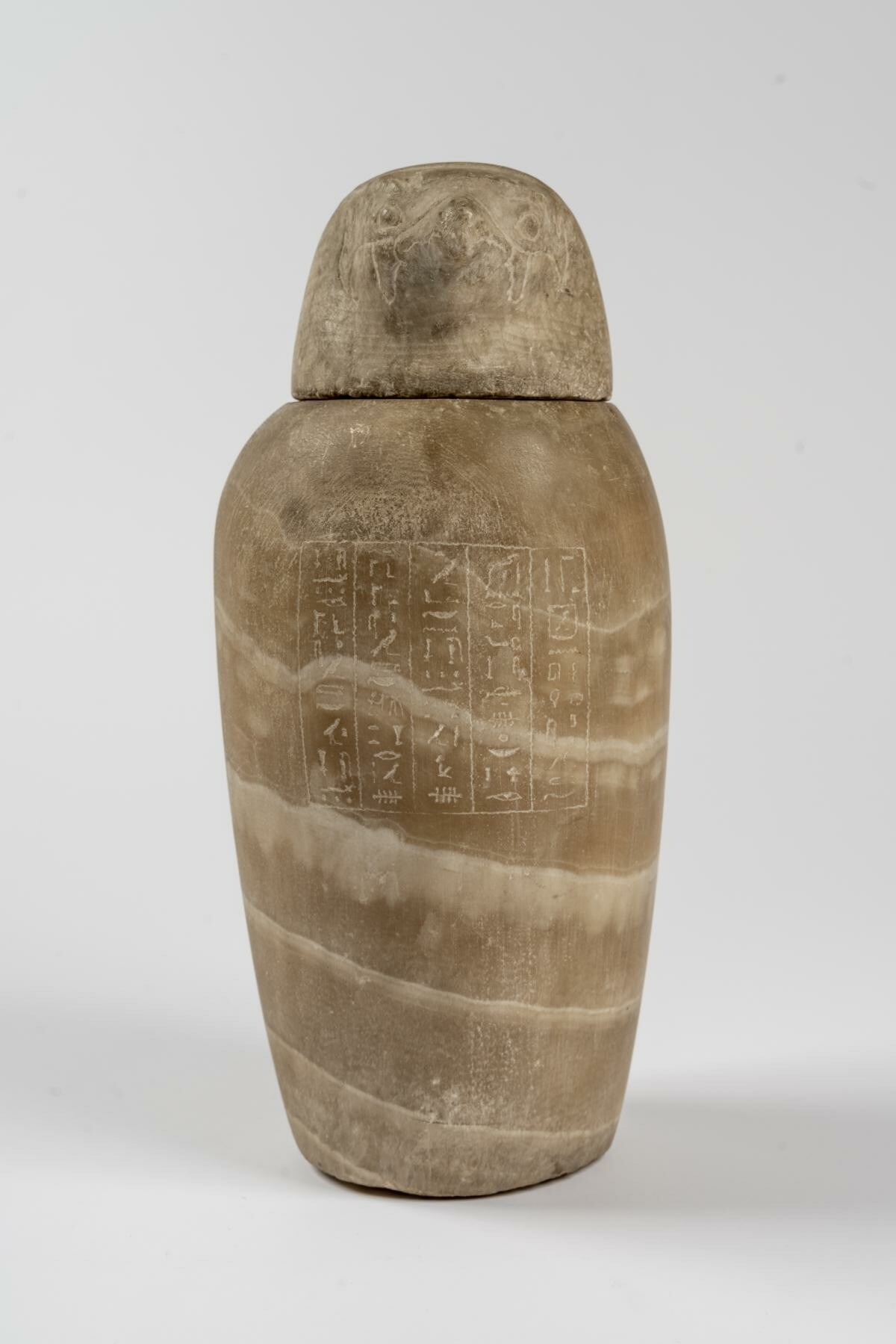Als Kanopen bezeichnet man Gefäße, die Organe eines Toten aufnehmen und zu jeder ägyptischen Grabausstattung gehörten. Die Deckel symbolisieren die vier Söhne des Gottes Horus, die jeweils die Organe schützen: Amset – Menschenkopf (Leber), Kebechsenuef – Falkenkopf (Gedärme), Duamutef – Schakalskopf (Magen), Hapi – Paviankopf (Lunge).
Fürst Hermann von Pückler-Muskau (1785-1871) reiste 1837 durch Ägypten und brachte unter anderem mehrere Kanopen mit nach Hause.
Erhalten sind heute im Schloss Branitz auch diese drei Kanopen (Schakal, Mensch und Falke), die einem Psametik (Psmṯk) gehörten. Laut Inschrift war er ein Priester („Gottesvater und Gottesdiener“) der Hathor, „Herrin der südlichen Sykomore“, einem Kultort bei Memphis.
en









